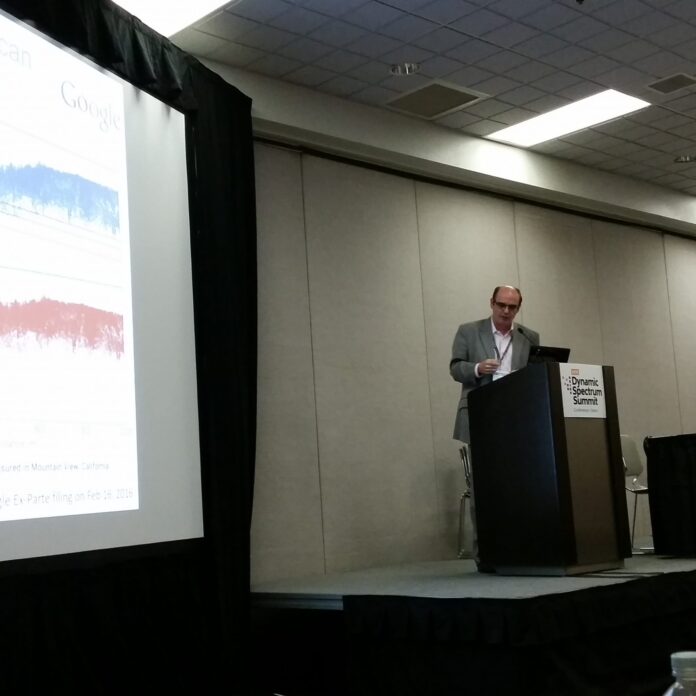LAS VEGAS – The First Responders Network Authority is pinning much of its economic viability on the ability to share its dedicated 700 MHz spectrum with a network partner who could use excess spectrum capacity, so long as first responder use will still be prioritized and other users preempted if necessary. But FirstNet isn’t the only entity looking to share spectrum, and the scarcity of that resource may mean spectrum sharing becomes a more viable option.
Google has been working on a spectrum access system for sharing in the 3.5 GHz band, and the company’s principal wireless architect for the project, Preston Marshall, told an audience at this week’s International Wireless Communications Expo that after major initial opposition from players in the telecom industry, most have come together with Google in the WinnForum – including all four national carriers and major infrastructure vendors. What spectrum sharing in the 3.5 GHz band will entail, Marshall added, is “the right to protect, but not exclude.” The spectrum will have a tiered access system so at least 50% of the spectrum will be available for any use, some commercial users will be able to purchase protection from interference, and naval radar and wireless Internet service providers will receive the highest level of protection.
Other research is ongoing that looks at spectrum sharing in a broader sense – as part of a truly dynamic network environment that could include a wide variety of “Internet of Things” devices being developed. William Chappell, director of the Microsystem Technology Office of Defense Advanced Research Projects Agency, said so far spectrum policy has largely revolved around policy makers forcing spectrum users to stay out of each other’s way – exclusive use of spectrum, more or less, in order to minimize interference. Spectrum analyzers, he said, are likely to become small and cheap so devices can detect what spectrum around them is being utilized and make an intelligent and rapid shift among the best available bands.
“The hardware will not be the problem,” Chappell said, adding DARPA already has a couple of monolithic chips in development designed to access a range of spectrum bands from low band to microwave, though antennas for such chips are “still an open research question.” Chappell said the challenge will be “in the underlying complexity” of navigating networks and tuning.
Chappell told audience members at the Dynamic Spectrum Sharing Conference, which is part of the IWCE event, about DARPA’s 2014 Spectrum Challenge, which pitted 90 university teams against one another to “demonstrate a radio protocol that can best use a given communication channel in the presence of other dynamic users and interfering signals.” DARPA is expected to announce its newest grand challenge – in the tradition of its self-driving car challenge, robotics challenge and others – at IWCE today, focused on spectrum collaboration.
Chappell said DARPA is also exploring how to best minimize battery needs, with the goal of resting battery drain to less than 10 nanowatts, or comparable to the natural leakage rate of a battery. The “Internet of Things,” he added, won’t work as anticipated if device batteries need to be changed on a regular basis.

